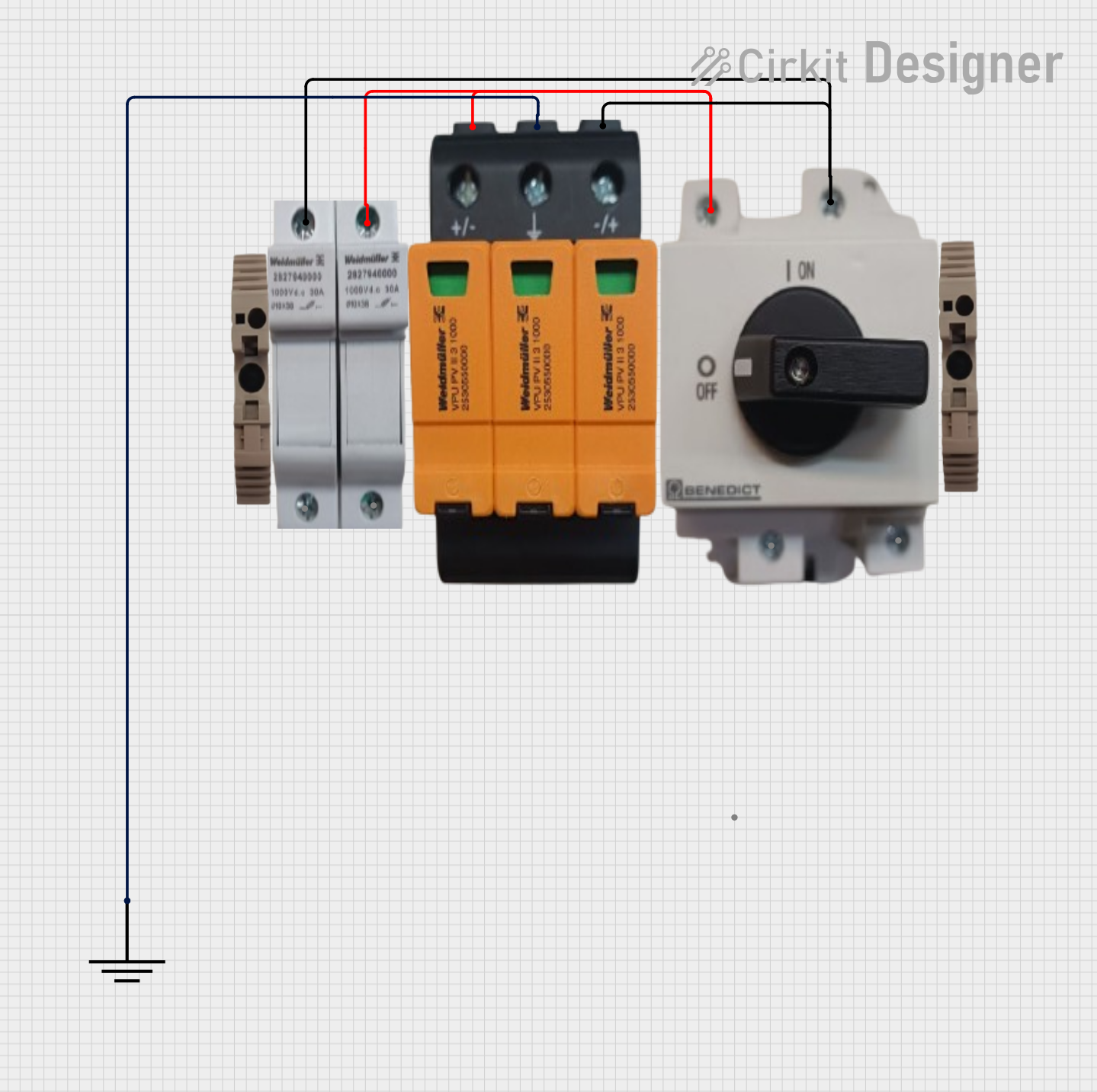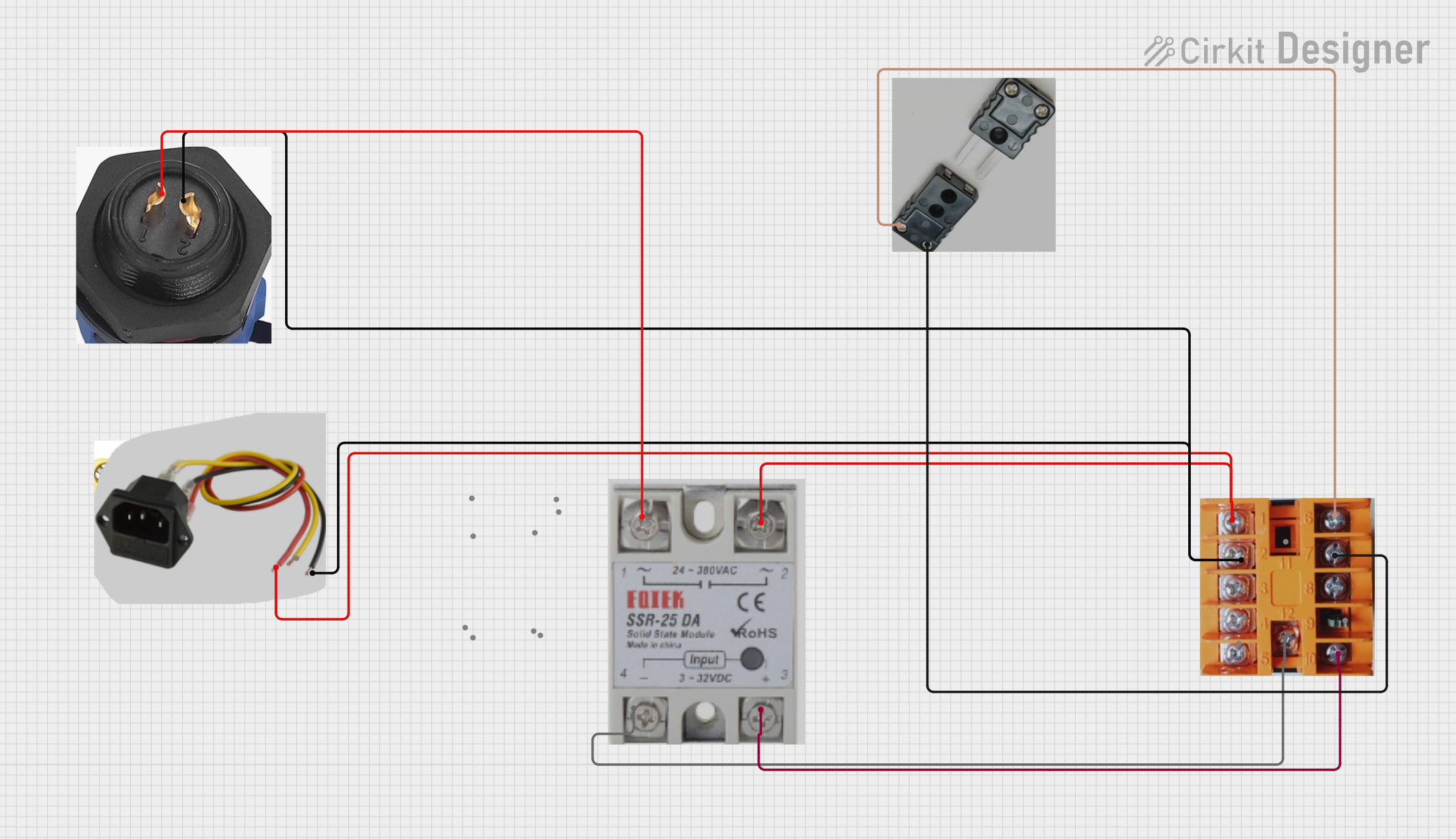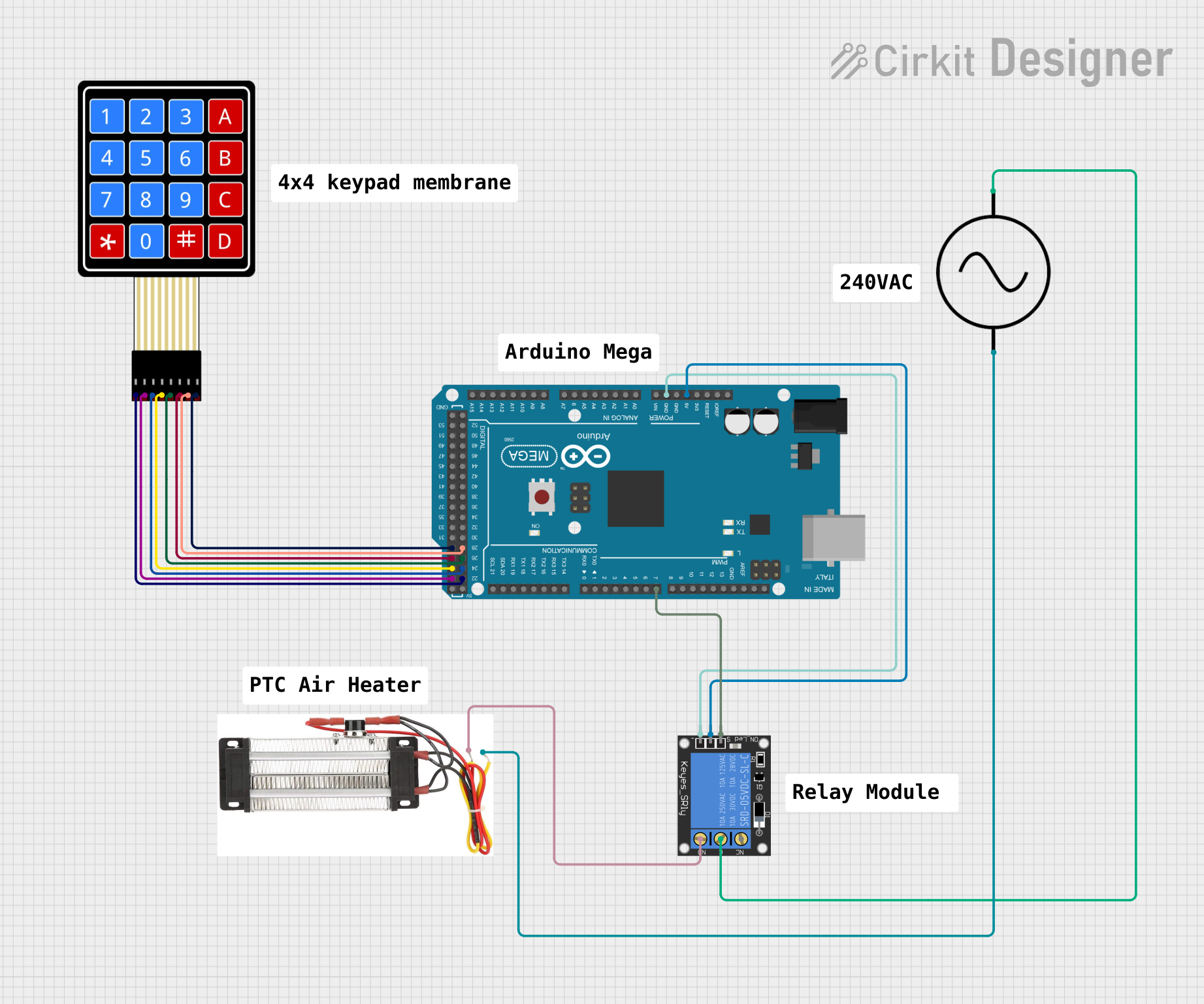
How to Use Resettable Fuse PTC: Examples, Pinouts, and Specs

 Design with Resettable Fuse PTC in Cirkit Designer
Design with Resettable Fuse PTC in Cirkit DesignerIntroduction
A Resettable Fuse PTC (Positive Temperature Coefficient) is an electronic component designed to provide overcurrent protection in a circuit. Unlike traditional fuses, which must be replaced after a single use, a resettable fuse 'trips' by significantly increasing its resistance when excessive current flows through it, thus limiting further current to a safe level. Once the overcurrent condition ceases, the PTC cools down, its resistance decreases, and it allows normal current flow again. This self-resetting feature makes PTCs ideal for a wide range of applications, including consumer electronics, automotive circuits, and battery packs.
Explore Projects Built with Resettable Fuse PTC

 Open Project in Cirkit Designer
Open Project in Cirkit Designer
 Open Project in Cirkit Designer
Open Project in Cirkit Designer
 Open Project in Cirkit Designer
Open Project in Cirkit Designer
 Open Project in Cirkit Designer
Open Project in Cirkit DesignerExplore Projects Built with Resettable Fuse PTC

 Open Project in Cirkit Designer
Open Project in Cirkit Designer
 Open Project in Cirkit Designer
Open Project in Cirkit Designer
 Open Project in Cirkit Designer
Open Project in Cirkit Designer
 Open Project in Cirkit Designer
Open Project in Cirkit DesignerTechnical Specifications
Key Technical Details
- Voltage Rating: The maximum voltage the PTC can withstand without damage.
- Current Rating: The nominal operating current before the PTC trips.
- Trip Current: The minimum current at which the PTC will trip.
- Time to Trip: The time it takes for the PTC to trip at a specified current.
- Resistance: The typical resistance value during normal operation and post-trip.
Pin Configuration and Descriptions
| Pin Number | Description |
|---|---|
| 1 | Current Input |
| 2 | Current Output |
Note: The PTC is a two-terminal device, with the current flowing from pin 1 to pin 2.
Usage Instructions
How to Use the Component in a Circuit
- Identify the Correct PTC: Choose a PTC with a voltage rating above the maximum operating voltage and a current rating that matches the typical operating current of your circuit.
- Circuit Placement: Connect the PTC in series with the load that needs protection.
- Orientation: PTCs are non-polarized, so they can be connected in either direction.
- Testing: After installation, test the circuit to ensure the PTC trips at the appropriate current level.
Important Considerations and Best Practices
- Selecting PTC Rating: Ensure the trip current of the PTC is slightly above the maximum expected normal current to avoid nuisance tripping.
- Thermal Considerations: Provide adequate space around the PTC for heat dissipation during and after tripping.
- Recovery Time: Allow time for the PTC to cool down and reset after an overcurrent event.
- Multiple PTCs: Do not parallel PTCs to increase the current rating, as they may not trip simultaneously.
Troubleshooting and FAQs
Common Issues
- PTC Does Not Reset: Ensure the overcurrent condition has been removed and sufficient time has passed for the PTC to cool.
- Nuisance Tripping: If the PTC trips during normal operation, verify that the selected PTC's current rating matches the circuit's requirements.
Solutions and Tips
- Ensure Proper Ratings: Double-check the PTC's voltage and current ratings according to the application's needs.
- Check Circuit Design: Review the circuit design for any potential sources of unexpected current spikes.
FAQs
Q: Can a PTC be used multiple times? A: Yes, PTCs are designed to reset themselves after an overcurrent condition is resolved.
Q: How quickly does a PTC reset? A: The reset time can vary based on the severity of the overcurrent condition and the ambient temperature. It typically takes a few seconds to minutes.
Q: Is there any polarity to be considered when installing a PTC? A: No, PTCs are non-polarized and can be installed in either direction.
Example Code for Arduino UNO
// Example code to demonstrate the use of a PTC with an Arduino UNO
// The PTC is assumed to be in series with a load connected to a digital pin
const int loadPin = 2; // Digital pin connected to the load
void setup() {
pinMode(loadPin, OUTPUT);
Serial.begin(9600);
}
void loop() {
digitalWrite(loadPin, HIGH); // Turn on the load
delay(1000); // Keep the load on for 1 second
// Simulate an overcurrent condition by keeping the load on for too long
// In a real-world scenario, the PTC would trip and protect the circuit
delay(5000); // Keep the load on for an additional 5 seconds
digitalWrite(loadPin, LOW); // Turn off the load
Serial.println("Load turned off. Waiting for PTC to reset if tripped.");
// Wait for the PTC to reset before turning the load back on
delay(10000); // Wait for 10 seconds
// The load can now safely be turned back on
Serial.println("Resuming normal operation.");
}
Note: The above code is for demonstration purposes only and does not directly interface with the PTC. The PTC's behavior is simulated through software delays.